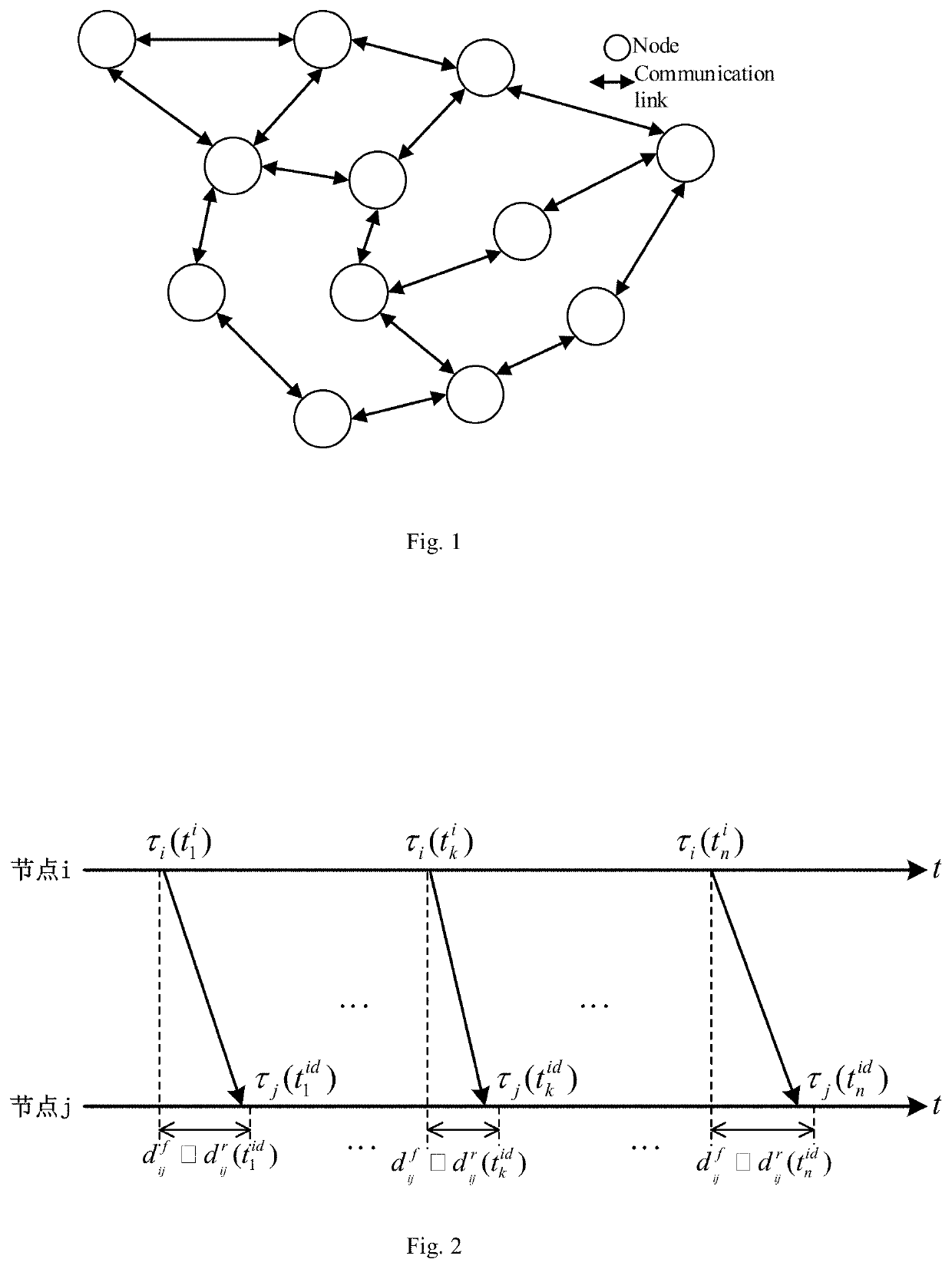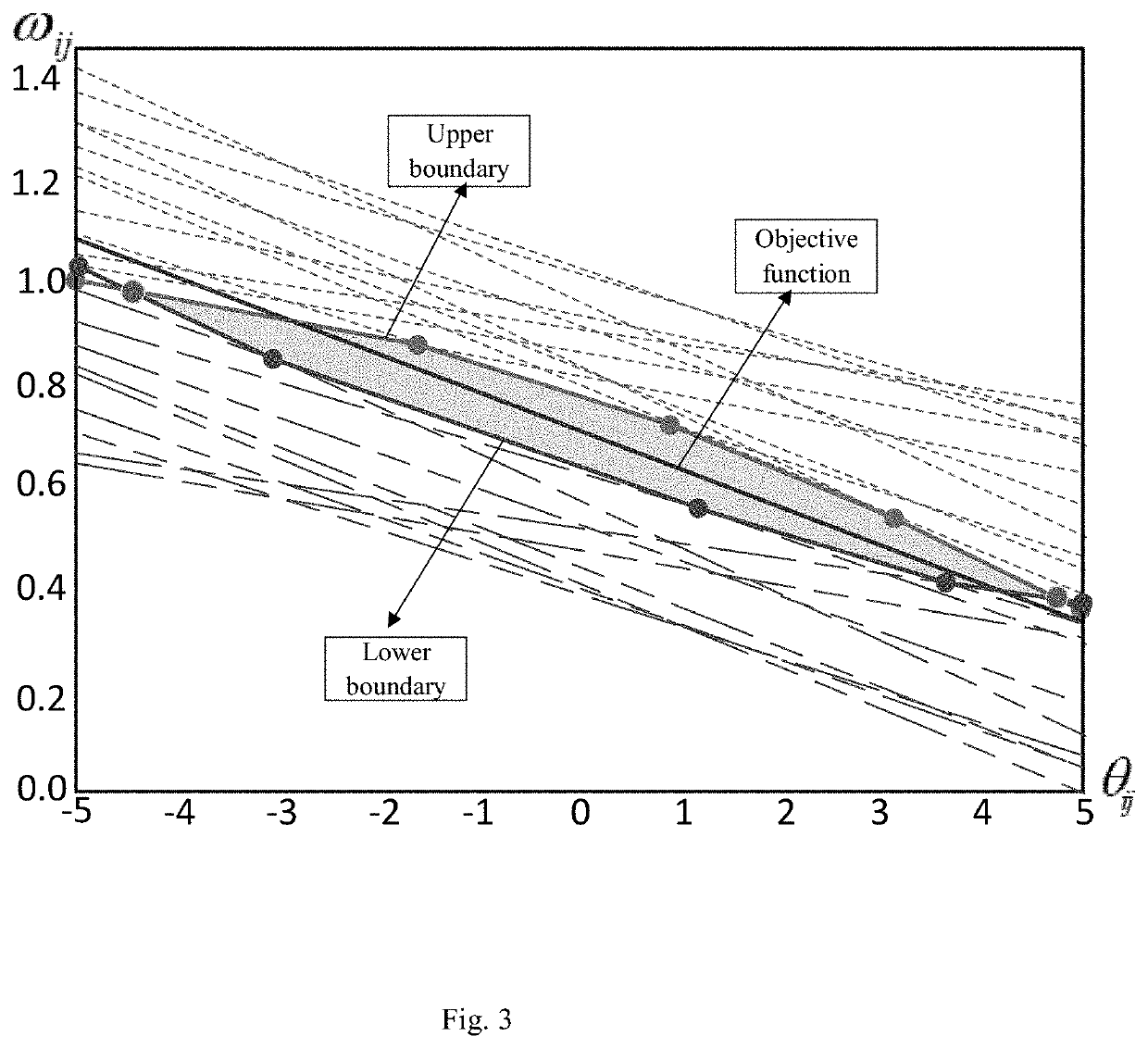Frequency Offset Estimation Method For Average Consistency Clock Synchronization
a frequency offset and average consistency technology, applied in the field of frequency offset estimation method, can solve the problems of inability to accurately estimate the relative frequency offset, and inability to achieve synchronization, so as to improve the consensus-based clock synchronization performance, improve the accuracy of the estimation method, and improve the effect of clock synchronization performan
- Summary
- Abstract
- Description
- Claims
- Application Information
AI Technical Summary
Benefits of technology
Problems solved by technology
Method used
Image
Examples
embodiments
[0040]FIG. 4 is a flow chart of the frequency offset estimation method for average consensus-based clock synchronization of the present invention. This embodiment provides a maximum likelihood estimation-based relative frequency offset estimation method for average consensus-based synchronization, as shown in the figure, specifically comprising following steps:
[0041]V1: starting a synchronization process.
[0042]V2-V4: Initializing message broadcast cycles, determining, by a node, whether a broadcast condition is met, if so, broadcasting clock synchronization messages, otherwise waiting until the condition is met.
[0043]V5-V6: Receiving and recording, by a neighbor node, a local clock thereof, analyzing a relative clock relationship between nodes.
[0044]V7-V10: Performing, by the neighbor node, maximum likelihood estimation of a relative frequency offset according to a new clock relationship, updating a likelihood function, that is, updating the objective function and constraints, and c...
PUM
 Login to View More
Login to View More Abstract
Description
Claims
Application Information
 Login to View More
Login to View More - R&D
- Intellectual Property
- Life Sciences
- Materials
- Tech Scout
- Unparalleled Data Quality
- Higher Quality Content
- 60% Fewer Hallucinations
Browse by: Latest US Patents, China's latest patents, Technical Efficacy Thesaurus, Application Domain, Technology Topic, Popular Technical Reports.
© 2025 PatSnap. All rights reserved.Legal|Privacy policy|Modern Slavery Act Transparency Statement|Sitemap|About US| Contact US: help@patsnap.com



